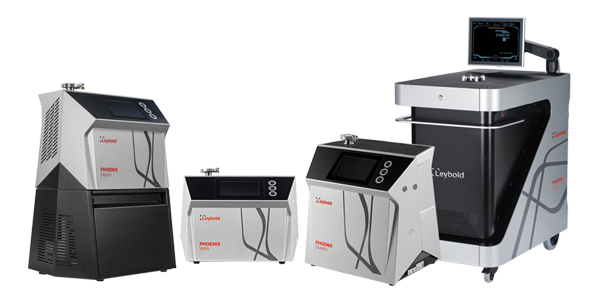Leak detectors (helium)
All vacuum systems are leaking, the question one must ask is ”how much leakage do we tolerate?”.
To find leaks, we generally use a mass spectrometer or leak detector. A leak detector is an instrument that is set to detect various types of pulp (substances) in gaseous form.
Leak detection in the vacuum industry takes place according to practice with trace gas and then mainly with helium.
Helium is light enough to be able to find its way into the vacuum system in a fast and smooth way, it is also completely inert (forming nasty chemical compounds) and is therefore not dangerous to work with. In addition, it is also very easy to identify, as the content of helium in the atmosphere is very low.


There are several types of methods for tracing leakage:
- Applying trace gas on the outside of an object whose inside is vacuum-mounted and where a mass spectrometer (leak detector)
is connected. - To apply trace gas on the inside of an object and with a so-called ”sniffer”, pump small amounts of gas around the object.
In both cases above, the purpose of the leak detector is to identify an elevated helium content in relation to the natural content (the ”setpoint” or the background value).
Leak detection often requires a great deal of knowledge, but also some patience, as it may take time to test its object properly.
Low2High Vacuum offers both leak detection services, but we also sell mass spectrometers for both helium and hydrogen.
You can read more about our different leak detection models under the respective product names.
Want to know more about leak detection? Do not hesitate to contact us for consultation or training.
